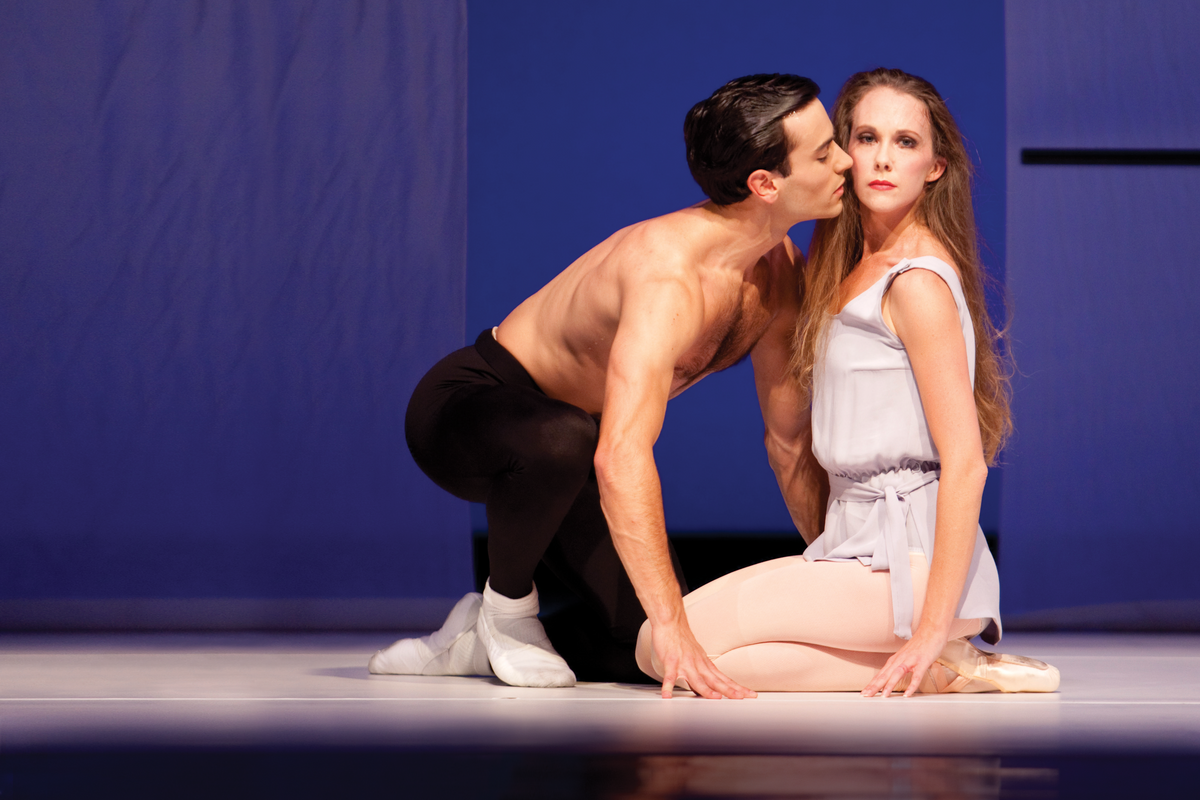Lessons in Subtlety: Kylee Kitchens on Why "Afternoon of a Faun" Is Harder Than It Looks
This story originally appeared in the June/July 2015 issue of Pointe.
The woman’s role in Jerome Robbins’ Afternoon of a Faun is surprisingly hard. The plot seems straightforward enough: two dancers happen upon each other in a studio. But the character, created for Tanaquil Le Clercq in 1953, oozes sensuality, innocence and vanity while responding—through the mirror—to her partner’s gaze. Here, Pacific Northwest Ballet soloist Kylee Kitchens offers insights into the “less is more” approach to Robbins’ choreography.
1. Find Your Focus
The stage is set like a studio, with a door upstage and barres lining the walls. “The most difficult part of the ballet is creating that fourth wall,” says Kitchens. “You have to look at the audience like you’re looking in the mirror.” She uses the real mirror in rehearsal to memorize where her focus needs to be, angling her head like she’s studying her own reflection, or that of her partner. “It has to be realistic. At the theater, we use an exit sign as a focal point so that we’re looking at exactly the same spot.”
2. Create Tension Through Stillness
Motionless moments emphasize the sexual tension between the two characters; wobbling can break the mood. For instance, after swooping down a diagonal, the woman stops her momentum mid-step at first sight of her partner. To secure this pedestrian pose, while making it look both natural and sharp, Kitchens turns her standing leg in for balance. “Later, when I flip onto his shoulder, I get my arms up and just hold myself,” she says. Once at the top of the lift, she resists the urge to fidget as her partner lowers her down.
3. Don’t Overact
Robbins’ style is natural and understated, with much of the acting built into the choreography. “It’s more about your body language, how you angle your shoulders and your head,” says Kitchens. “I try to let my eyes read without being overly dramatic with my face.” The character is inquisitive and self-absorbed, but the movements are simple and clear. Try not to add mannerisms or overdo the subtle details. “The choreography will speak for itself.”
4. Relate to Your Partner
Upon seeing the man, the woman is aloof yet flirtatious. “It’s like those teenage years that are so raw and innocent, and there’s a bubbling of sexuality,” says Kitchens, who remembers feeling the boy’s hands on her waist during her first partnering class. “You pretend you don’t care.” The tension builds until the end of the pas de deux, when the man kisses her cheek. “You’re watching yourself in the mirror, watching it happen,” says Kitchens. “You decide to leave before it gets to be too much.”
5. Use Breath for Effect
Afternoon of a Faun is not a stamina piece. “I never feel out of breath,” says Kitchens. Instead, she uses her breath to show visceral responses at key moments. When her partner touches her waist for the first time, Kitchens gasps before stepping away. Later she takes a deep inhale before leaning into a luscious backbend, her partner gently caressing her hair. And before the final kiss, she holds her breath in anticipation. “I don’t want the audience to see my stomach going in and out.”





